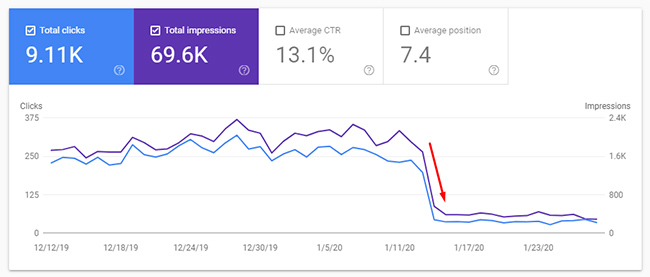General
Why Your Website Loses Customers: Key Issues & Fixes for Indian SMEs

In today’s digital world, your website loses customers! Your website is like a virtual store for your Indian SME. However, many businesses find it difficult to keep visitors on their site and turn them into loyal customers. Recent studies reveal that 75% of users determine a company’s credibility based on its website design, making it essential to fix common website problems that drive potential customers away.
Challenges Faced by Indian SMEs in the Digital Space
Indian SMEs face unique challenges when it comes to establishing a strong online presence:
Limited technical expertise to maintain and optimize websites
Intense competition from larger enterprises with advanced online presence
Increasing customer expectations for smooth digital experiences
Resource limitations affecting website maintenance and updates
The impact of these challenges is significant – a poorly performing website can result in your business losing up to 40% of potential customers within the first few seconds of their visit. Your website’s performance directly affects:
Customer trust and brand perception
Sales conversion rates
Market competitiveness
Business growth potential
Why Website Optimization Matters for Indian SMEs
Fixing these website issues isn’t just about making things look better – it’s crucial for survival and growth in an increasingly digital marketplace. For Indian SMEs, improving your website performance can be the key to thriving instead of just surviving in today’s competitive business landscape.
The good news? Many common website problems have practical and affordable solutions that can completely transform your online presence and help you retain valuable customers.
Understanding Why Websites Loses Customers
Your website is like your store on the internet. It’s really important to make a good first impression because there’s a lot of competition out there. Studies show that 75% of users decide if a company is trustworthy based on how their website looks. This means that how easy it is for users to navigate your site can directly affect whether they become customers or not.
Let’s take a closer look at what causes customers to leave:
1. Slow Loading Speed
A delay of just 1 second can lead to an 11% decrease in page views
40% of users will leave a website if it takes more than 3 seconds to load
Mobile users expect websites to load even faster than those on desktop
2. Poor User Experience Elements
Complicated navigation structures
Cluttered layouts
Non-responsive design (websites that don’t adapt to different screen sizes)
Broken links or error pages
Missing contact information
3. Brand Visibility Issues
Inconsistent brand messaging across different platforms
Lack of social proof (testimonials, reviews, etc.)
Outdated content that doesn’t reflect current offerings
Missing meta descriptions (short summaries of web pages)
Poor search engine rankings making it hard for people to find you online
These problems can have a snowball effect over time. According to a study by Google, 53% of mobile users leave websites that take longer than three seconds to load. This high bounce rate not only hurts immediate sales but also affects your site’s visibility on search engines, creating a cycle where fewer people discover you.
Your website’s performance has a direct impact on how users behave and ofcourse why website loses customers. When visitors encounter obstacles like slow loading times, confusing navigation, or unclear information, they’re likely to look for other options. In India, where more and more people are going online, these issues become even more important because users have higher expectations for their digital experiences.
By understanding these main problems, you can figure out which specific areas need improvement. Every visitor who leaves without making a purchase represents potential money lost, so it’s crucial to tackle these issues one by one. The good news is that most of these problems can be fixed with the right strategies and tools.

Key Issues Leading to Website Loses Customers and How to Fix Them
Your website might be losing customers because of several critical issues that affect Indian SME websites. Let’s take a closer look at these problems and find practical solutions to fix them.
1. Poor User Experience (UX)
Research shows that users form their first impression of your website in just 50 milliseconds. This split-second judgment can make or break your chance to convert visitors into customers.
Common UX Issues That Drive Customers Away:
Cluttered layouts with excessive information
Complex navigation menus
Slow-loading pages
Intrusive pop-ups
Inconsistent design elements
Hidden contact information
Broken links and 404 errors
Practical Steps to Enhance User Experience:
Simplify Your Navigation
Limit main menu items to 5-7 options
Use clear, descriptive labels
Implement a logical hierarchy
Add a search function for quick access
Optimize Page Load Speed
Compress images without sacrificing quality
Minimize HTTP requests
Enable browser caching
Use a Content Delivery Network (CDN)
Target a maximum load time of 2-3 seconds
Create Clear Visual Hierarchies
Use consistent heading styles
Implement proper spacing between elements
Maintain a color scheme that reflects your brand
Ensure sufficient contrast for readability
Quick Fixes for Better User Pathways:
Place your most important content “above the fold”
Add clear calls-to-action (CTAs) on every page
Create breadcrumb navigation for complex sites
Design with F-pattern and Z-pattern reading habits in mind
Implement a responsive design that works across all devices
Essential UX Improvements:
Homepage Optimization
Clear value proposition
Direct pathways to key products/services
Easy-to-find contact information
Social proof elements
Content Structure
Short, scannable paragraphs
Bulleted lists for key information
Relevant images and videos
2. Lack of Mobile Optimization

India’s mobile internet users have surpassed 750 million, with 78% of web traffic coming from mobile devices. This shift demands a mobile-first approach for SME websites.
A non-mobile-optimized website creates significant barriers apart from why website loses customers:
1. Lost Sales: 61% of users never return to a mobile site they struggled to access
2. Reduced Visibility: Google’s mobile-first indexing penalizes non-mobile-friendly sites
3. Higher Bounce Rates: Mobile users abandon sites that take over 3 seconds to load
Essential Mobile Optimization Strategies:
Responsive Design Implementation
Auto-adjusting layouts for different screen sizes
Touch-friendly buttons (minimum 44×44 pixels)
Readable font sizes (minimum 16px)
Compress images using WebP format
Enable browser caching
Minimize CSS, JavaScript, and HTML
Use AMP (Accelerated Mobile Pages) for critical content
Content Adaptation
Short, scannable paragraphs
Bullet points for key information
Clear headings and subheadings
Visible call-to-action buttons
Testing and Monitoring Tools:
PageSpeed Insights
GTmetrix Mobile Analysis
Browser Stack for cross-device testing
Quick Mobile Optimization Checklist:
Remove pop-ups that cover content
Optimize images for faster loading
Enable viewport meta tag
Test forms and checkout process
Ensure tap targets are properly sized
Check mobile search functionality
Verify mobile loading speed < 3 seconds
Mobile optimization isn’t optional – it’s a critical factor in retaining customers and maintaining competitiveness in India’s digital marketplace. Regular testing and updates ensure your mobile experience meets evolving user expectations and technical requirements as for why website loses customers.
3. Low Website Traffic
Low website traffic remains a persistent challenge for Indian SMEs, impacting their ability to attract and convert potential customers. A combination of factors contributes to this issue:
Common Traffic Barriers
Insufficient keyword research and targeting
Limited local SEO optimization
Poor backlink profiles
Lack of regular content updates
Minimal social media presence
Effective SEO Practices to Drive Traffic
1. Local SEO Optimization
Create and optimize Google My Business listings
Include location-specific keywords in content
Build local citations across business directories
Generate location-based content and landing pages
2. Technical SEO Implementation
Structure URLs with relevant keywords
Implement schema markup for enhanced SERP visibility
Create XML sitemaps for better indexing
Fix broken links and redirect errors
Content-Driven Traffic Strategies
Develop industry-specific blog posts targeting customer pain points
Create how-to guides and tutorials relevant to your products
Share customer success stories and case studies
Publish regional content in multiple Indian languages
Social Media Traffic Generation
Your social media presence directly impacts website traffic. Implement these proven strategies:
Cross-promote website content across social platforms
Share user-generated content to boost engagement
Use platform-specific hashtags to increase visibility
Create shareable infographics and visual content
Engage with industry influencers and communities
Paid Traffic Solutions
Consider these paid traffic solutions to complement your organic efforts:
Google Ads with location targeting
Social media advertising on platforms popular in India
Display advertising on relevant industry websites
Remarketing campaigns to re-engage visitors
Analytics-Based Traffic Optimization
Regularly analyze your website traffic using these methods:
Track traffic sources through Google Analytics
Monitor user behavior patterns
Identify high-performing keywords
Analyze competitor traffic strategies
By implementing these targeted approaches, SMEs can create sustainable traffic growth. Focus on combining organic SEO efforts with strategic social media engagement and paid advertising for optimal results. Regular monitoring and adjustment of these strategies ensure continuous improvement in website visibility and traffic generation.
4. Website Loses Customers also with Ineffective Content Strategy
Your website’s content serves as a direct line of communication with potential customers. A poorly executed content strategy can drive visitors away within seconds, regardless of your product quality or service excellence.
Quality Content: Your Website’s Foundation
High-quality content builds trust, establishes authority, and keeps visitors engaged. Research shows websites with relevant, valuable content experience 6x higher conversion rates than those without. Your content needs to:
Address specific pain points of your target audience
Provide actionable solutions to customer problems
Include data-backed insights and industry expertise
Maintain consistency in tone and messaging
Creating Content That Resonates
Understanding your audience’s needs is crucial for content creation. Here’s what works:
Industry Updates: Share news and developments relevant to your sector
How-to Guides: Create step-by-step tutorials solving common customer problems
Case Studies: Showcase real success stories and customer testimonials
Product Comparisons: Help customers make informed decisions
Expert Interviews: Feature insights from industry leaders
Strategic Content Planning
A well-structured content calendar ensures consistent delivery of valuable information:
Map content themes to your business goals
Plan seasonal content 2-3 months in advance
Mix different content formats (blogs, videos, infographics)
Schedule regular content audits to remove outdated information
Track content performance through analytics
Content Optimization Tips
Your content should be:
Scannable with clear headings and bullet points
Enhanced with relevant images and videos
Optimized for voice search
Updated regularly with fresh information
Written in simple, clear language
Remember to maintain a balance between promotional and informative content. The 80/20 rule works well – 80% valuable information, 20% promotional content. This approach helps build lasting relationships with your audience while maintaining their interest in your website.
5. Lack of Trust Signals and Inadequate Customer Support Options
Building trust with potential customers is crucial for Indian SMEs operating in the digital space. Research shows that 88% of consumers consider trust signals when making purchase decisions online.
Essential Trust Signals for SME Websites:
SSL certificates and secure payment badges
Clear display of business registration details
Customer testimonials and verified reviews
Professional certifications and industry affiliations
Money-back guarantees and return policies
Social proof through follower counts and engagement
Media mentions and awards
Your website needs robust customer support options to maintain credibility. Studies indicate that 67% of customers abandon purchases due to inadequate support systems.
Effective Customer Support Features:
Live chat integration with quick response times
WhatsApp business integration for instant messaging
Clear contact information displayed prominently
FAQ sections addressing common concerns
Self-service knowledge base
Multi-language support options
Support ticket systems with tracking
Implementing Trust-Building Elements:
Display authentic customer reviews on product pages
Showcase real-time order notifications
Add trust badges near checkout buttons
Include detailed product information and specifications
Present transparent pricing without hidden costs
Customer Support Best Practices:
Set up automated responses for after-hours inquiries
Create detailed product documentation
Implement chatbots for 24/7 basic support
Maintain consistent response times across channels
Train support staff in product knowledge
Indian SMEs can significantly improve customer confidence by displaying certifications from recognized bodies like ISO or industry-specific organizations. Including secure payment options through trusted providers like RazorPay, PayTM, or UPI enhances transaction trust.
A dedicated support section should feature:
Multiple contact channels
Expected response times
Operating hours
Support team photos and names
Clear escalation procedures
Real-time support metrics show that websites with visible customer service options experience 23% higher conversion rates. Implementing these trust signals and support features creates a professional image that helps retain customers and encourages repeat business.
6. Ignoring Analytics and How to Utilize Them Effectively

Analytics tools serve as your website’s digital compass, guiding decisions through data-driven insights. Many Indian SMEs miss growth opportunities by neglecting these powerful tools that reveal crucial visitor behavior patterns.
Essential Analytics Metrics to Track:
Bounce Rate: A high bounce rate (>70%) signals content misalignment with user expectations
Average Session Duration: Sessions under 30 seconds indicate potential user experience issues
Exit Pages: Pages with high exit rates need immediate attention and optimization
User Flow: Understanding how visitors navigate your site reveals optimization opportunities
Device Usage: Tracking which devices your visitors use helps prioritize optimization efforts
Real-Time Performance Monitoring:
Set up custom dashboards to track key performance indicators
Monitor page load times across different regions in India
Track user interactions with specific elements
Analyze conversion paths and identify drop-off points
Measure the effectiveness of marketing campaigns
Data-Driven Decision Making:
Your analytics data should drive website improvements. A structured approach includes:
Weekly performance reviews
Monthly trend analysis
Quarterly goal assessments
A/B testing of new features
Regular user behavior analysis
Advanced Analytics Implementation:
Set up event tracking for button clicks
Configure goal tracking for important actions
Implement enhanced e-commerce tracking
Create custom segments for detailed analysis
Google Analytics remains the primary tool for Indian SMEs, but combining it with heatmap tools like Hotjar provides deeper insights into user behavior and understanding about why website loses customers. These tools reveal where users click, scroll patterns, and areas of interest on your pages.
Key Performance Benchmarks:
Page load time: < 3 seconds
Bounce rate: < 55%
Pages per session: > 2
Average session duration: > 2 minutes
Mobile conversion rate: > 1%
Regular monitoring of these metrics helps identify issues before they impact your bottom line. Setting up automated alerts for significant metric changes enables quick responses to potential problems.
To better understand these essential analytics metrics, it’s crucial to delve into resources that provide in-depth knowledge about engagement metrics and their impact on user experience. Furthermore, exploring advanced web analytics techniques can significantly enhance the way you utilize data, leading to more informed decision-making and ultimately, better results for your business.
Conclusion: Embracing Digital Marketing Solutions for Long-Term Success as an SME in India
The digital landscape presents unlimited opportunities for Indian SMEs ready to adapt and grow. Your website serves as the digital storefront of your business – its optimization directly impacts your success in the competitive online marketplace.
The path to sustained growth includes:
Implementing regular website audits to identify and fix user experience issues
Adopting mobile-first design principles
Creating valuable, audience-focused content
Building trust through transparent business practices
Making data-driven decisions through analytics
Your commitment to these practices positions your business for long-term success. Start with small, manageable changes and gradually build a robust digital presence that resonates with your target audience.
Remember: Your website isn’t just a digital business card – it’s a powerful tool for growth. Each improvement you make strengthens your connection with customers and opens new opportunities for business expansion.
Take action today:
Review your current website performance
Identify the most pressing issues affecting your customer retention
Create an action plan prioritizing critical fixes
Implement changes systematically
Monitor results and adjust strategies as needed
The digital transformation of your SME is an ongoing journey. Each step you take toward website optimization brings you closer to achieving sustainable business growth in India’s dynamic digital marketplace.
FAQs (Frequently Asked Questions) Regarding Website Loses Customers
What are the main reasons Indian SME’s website is losing customers?
Indian SMEs often face challenges such as poor user experience, slow loading times, lack of mobile optimization, low website traffic, ineffective content strategy, and insufficient trust signals. Addressing these issues is crucial for retaining customers and enhancing business growth.
How does poor user experience affect customer retention?
Poor user experience can lead to negative first impressions within milliseconds and easy reason as why website loses customers. Simplifying navigation and improving usability are essential steps to ensure users can easily find what they need, thereby increasing the likelihood of retaining them.
Why is mobile optimization important for SMEs?
With the rise of mobile usage, optimizing websites for mobile devices is critical. A significant portion of web traffic comes from mobile users, and ensuring that a website is fast and responsive on these devices directly impacts user satisfaction and retention.
What strategies can be implemented to improve website traffic?
To enhance website traffic, SMEs can utilize effective SEO practices, engage in social media marketing, and create high-quality content that meets the needs of their target audience. Regularly analyzing website performance can also help identify areas for improvement.
How can trust signals influence customer decisions on a website?
Establishing credibility online through trust signals such as customer reviews, secure payment options, and visible contact information can significantly enhance customer confidence. Providing adequate customer support options further influences positive purchasing decisions.
Why should SMEs utilize analytics tools for their websites?
Utilizing analytics tools is essential for understanding visitor behavior and identifying critical areas needing improvement. Regular analysis helps track key metrics that indicate website performance health, allowing SMEs to make informed decisions that enhance user experience.





